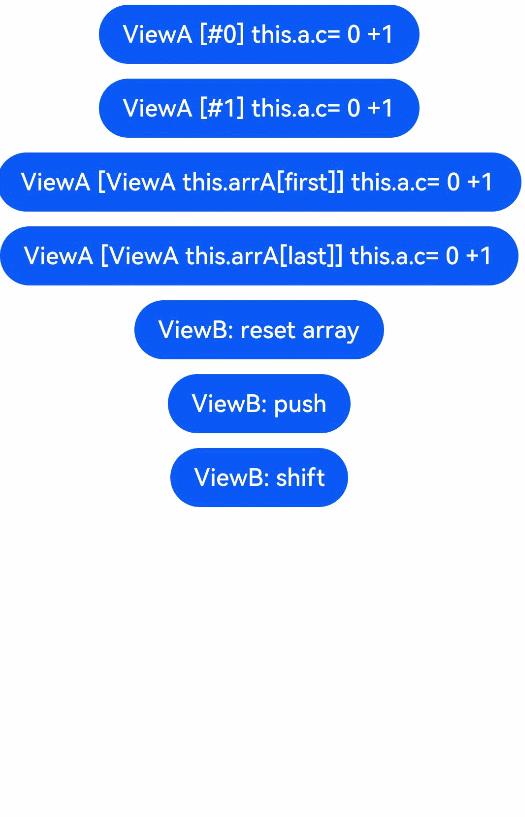HarmonyOS鸿蒙学习笔记(14)@ObjectLink的作用
Posted 郭梧悠
tags:
篇首语:本文由小常识网(cha138.com)小编为大家整理,主要介绍了HarmonyOS鸿蒙学习笔记(14)@ObjectLink的作用相关的知识,希望对你有一定的参考价值。
在HarmonyOS鸿蒙学习笔记(12)@Link的作用一文中简单介绍了@Link的作用。其局限性在于@Link是针对某个数据对象进行的整体同步,而当开发者只想针对父组件中某个数据对象的部分信息进行同步时,使用@Link就不能满足要求。如果这些部分信息是一个类对象,就可以使用@ObjectLink配合@Observed来实现。
使用@ObjectLink设置要求
1、@Observed 用于类,如下面代码使用@Observed修饰了ClassA 这个类。
//@Observed 用于类
@Observed
class ClassA
public name: string;
public c: number;
public id: number;
constructor(c: number, name: string = 'OK')
this.name = name;
this.c = c;
this.id = nextID++;
2、@ObjectLink 用于变量。@ObjectLink装饰的变量类型必须为类(class type)。类要被@Observed装饰器所装饰,另外@ObjectLink装饰的变量是不可变的(immutable)。属性的改动是被允许的,当改动发生时,如果同一个对象被多个@ObjectLink变量所引用,那么所有拥有这些变量的自定义组件都会被通知去重新渲染。如下代码@ObjectLink修饰的变量a,其类型就是ClassA,而该类就被@Observed标注了。
//子组件ViewA
@Component
struct ViewA
label: string = "ViewA1";
//`@ObjectLink`装饰的变量类型必须为类(class type)
@ObjectLink a: ClassA;
build()
Row()
Button(`ViewA [$this.label] this.a.c= $this.a.c +1`)
.onClick(() =>
//属性的改动是被允许的
this.a.c += 1;
)
.margin( top: 10 )
3、必须让父组件中有一个由@State、@Link、@StorageLink、@Provide或@Consume所装饰变量参与的TS表达式进行初始化。我们来看看父组件怎么写:
//父组件
@Entry
@Component
struct ViewB
//
@State arrA: ClassA[] = [new ClassA(0), new ClassA(0)];
build()
Column()
ForEach(this.arrA, (item) =>
//将数组元素item赋值给ViewA的a属性
ViewA( label: `#$item.id`, a: item )
,
(item) => item.id.toString()
)
//将数组元素item赋值给ViewA的a属性
ViewA( label: `ViewA this.arrA[first]`, a: this.arrA[0] )
ViewA( label: `ViewA this.arrA[last]`, a: this.arrA[this.arrA.length-1] )
Button(`ViewB: reset array`)
.margin( top: 10 )
.onClick(() =>
//重新设置数组
this.arrA = [new ClassA(0), new ClassA(0)];
)
Button(`ViewB: push`)
.margin( top: 10 )
.onClick(() =>
//更新数组
this.arrA.push(new ClassA(0))
)
Button(`ViewB: shift`)
.margin( top: 10 )
.onClick(() =>
//删除数组的一个元素
this.arrA.shift()
)
运行结果如下:

当点击红色矩形框里的按钮任意一个,另外一个红色矩形框的按钮都跟着同步刷新。完成的运行动态图如下:

其原理总结如图:

官方资料:
@ObjectLink简介
以上是关于HarmonyOS鸿蒙学习笔记(14)@ObjectLink的作用的主要内容,如果未能解决你的问题,请参考以下文章